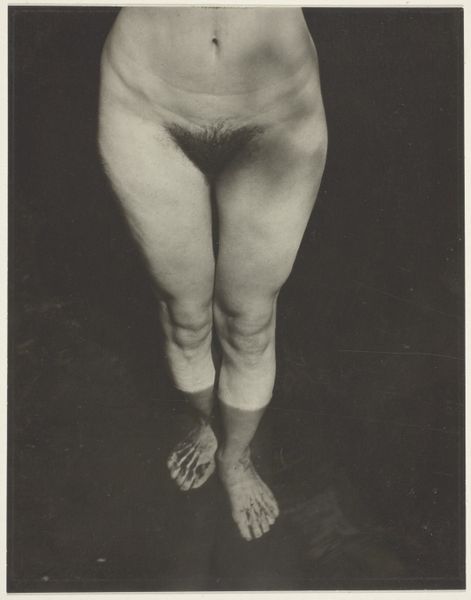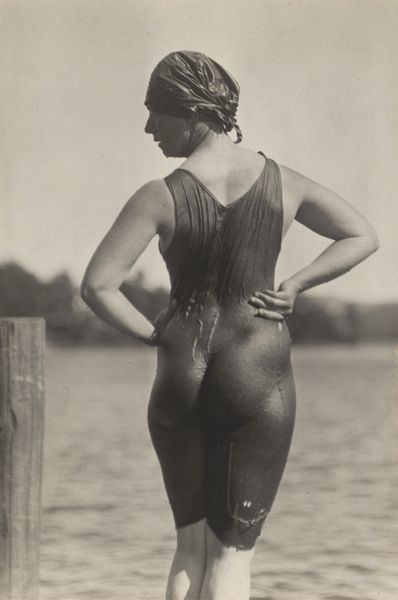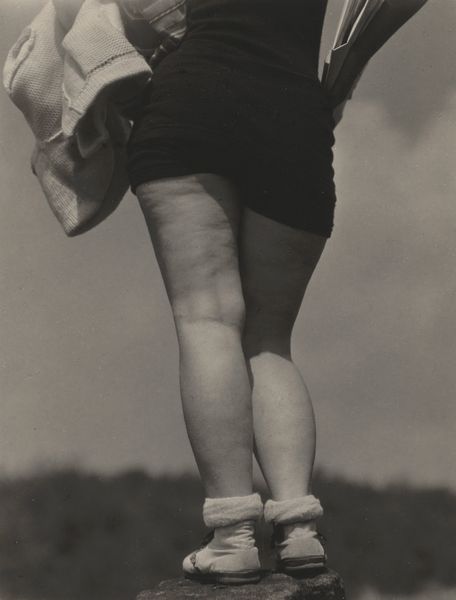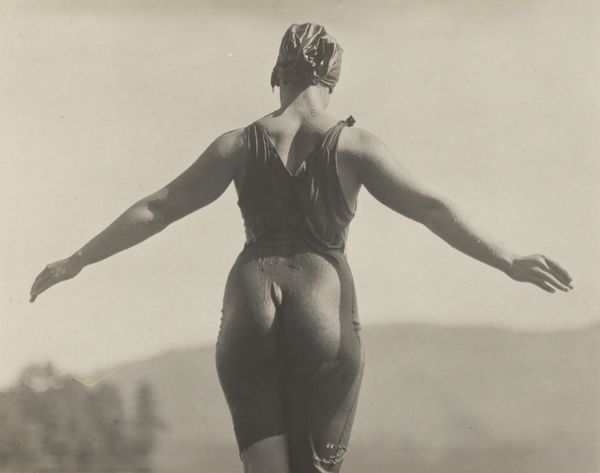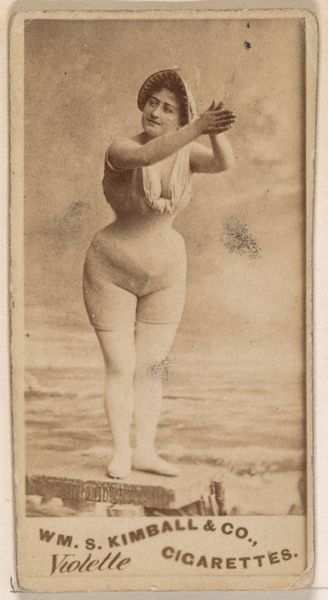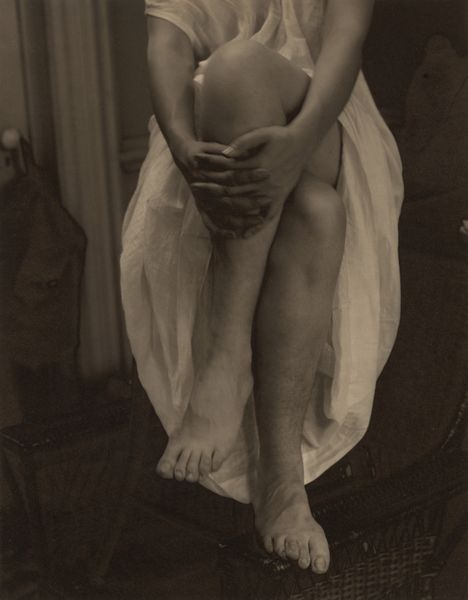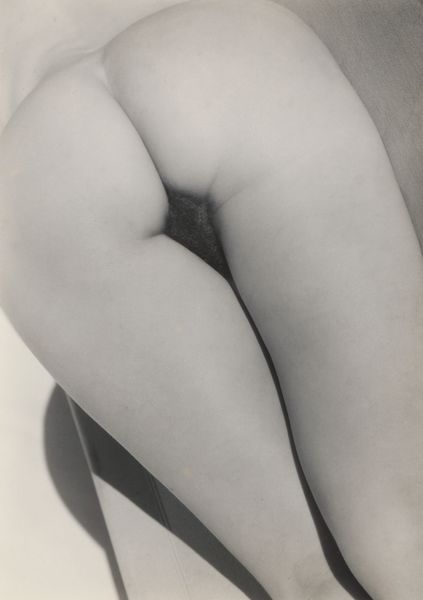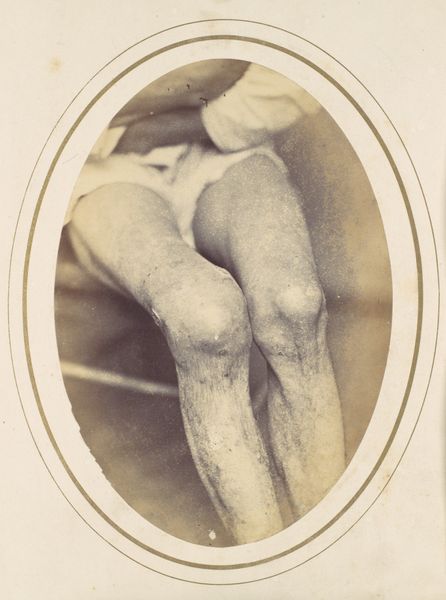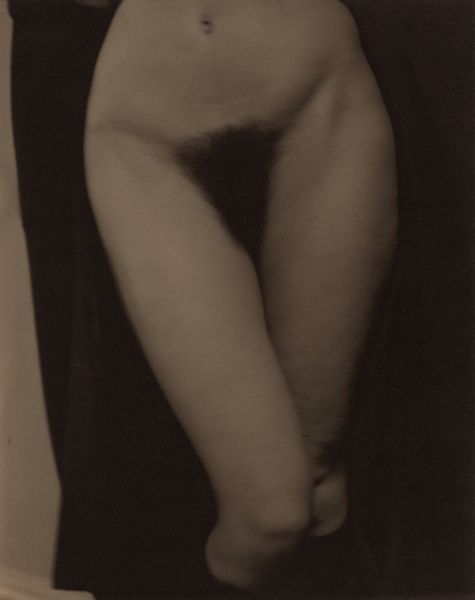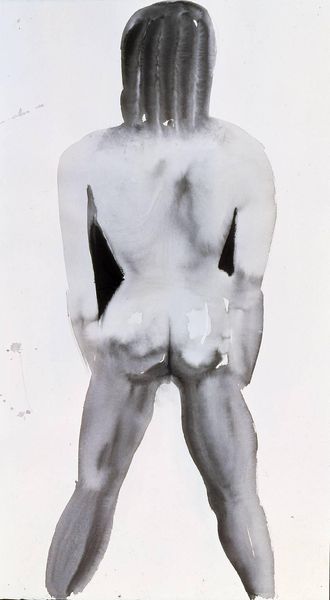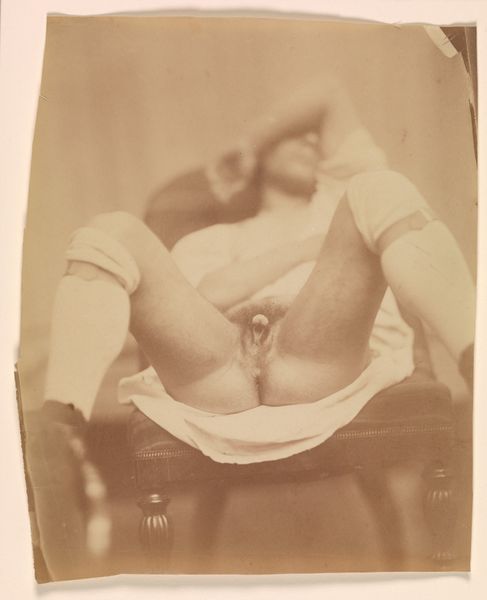
photography, gelatin-silver-print
#
pictorialism
#
photography
#
black colour
#
black and white
#
gelatin-silver-print
#
monochrome photography
#
monochrome
#
nude
#
monochrome
Dimensions: sheet (trimmed to image): 11.6 × 8.9 cm (4 9/16 × 3 1/2 in.) mount: 32.9 × 25.5 cm (12 15/16 × 10 1/16 in.)
Copyright: National Gallery of Art: CC0 1.0
Editor: This is Alfred Stieglitz's gelatin-silver print, "Ellen Koeniger, Lake George" from 1916. It's a close-up, monochrome photograph... well, frankly, it’s of someone’s rear. The high contrast and tight focus somehow makes it very… intimate, I guess? What am I missing? How do you interpret this work? Curator: Intimacy is a good starting point. Consider Stieglitz’s use of photography as a medium. He wasn't merely documenting; he was exploring emotional truth. How does the close crop, the almost tactile rendering of skin and fabric, influence our reading of the body? Does it become about the individual, or something more universal? Editor: I see what you mean. The textures, the light... it's less about *that* body, and more about the human form itself. Is it trying to depict an idealized form? Curator: Perhaps not idealised in a classical sense, but consider what else the body represents. It's a vessel, isn't it? Carrying experiences, memories. The bathing suit clings like a second skin, mapping the contours of lived experience. And the ripples? Might those echo the water of Lake George, hinting at deeper emotional currents? Editor: So the ripples are like…visual echoes? Maybe Stieglitz is suggesting that what's on the surface reflects something profound underneath. Are there are similar themes in Stieglitz's other works? Curator: Precisely. Think about Stieglitz's series of cloud photographs, the "Equivalents." He saw them as representations of inner emotional states. This photograph functions similarly, using the physical form to convey something beyond the immediately visible. Photography can also reveal textures we would not otherwise have noticed. It lets us reflect on shape in a new way. Editor: I see. It's more than just a rear end; it's a map of feelings, echoed in the landscape and the materials themselves. It’s pretty compelling. Curator: Exactly. Stieglitz found a way to use photography to translate inner feelings into images, capturing human form and experience.
Comments
No comments
Be the first to comment and join the conversation on the ultimate creative platform.
